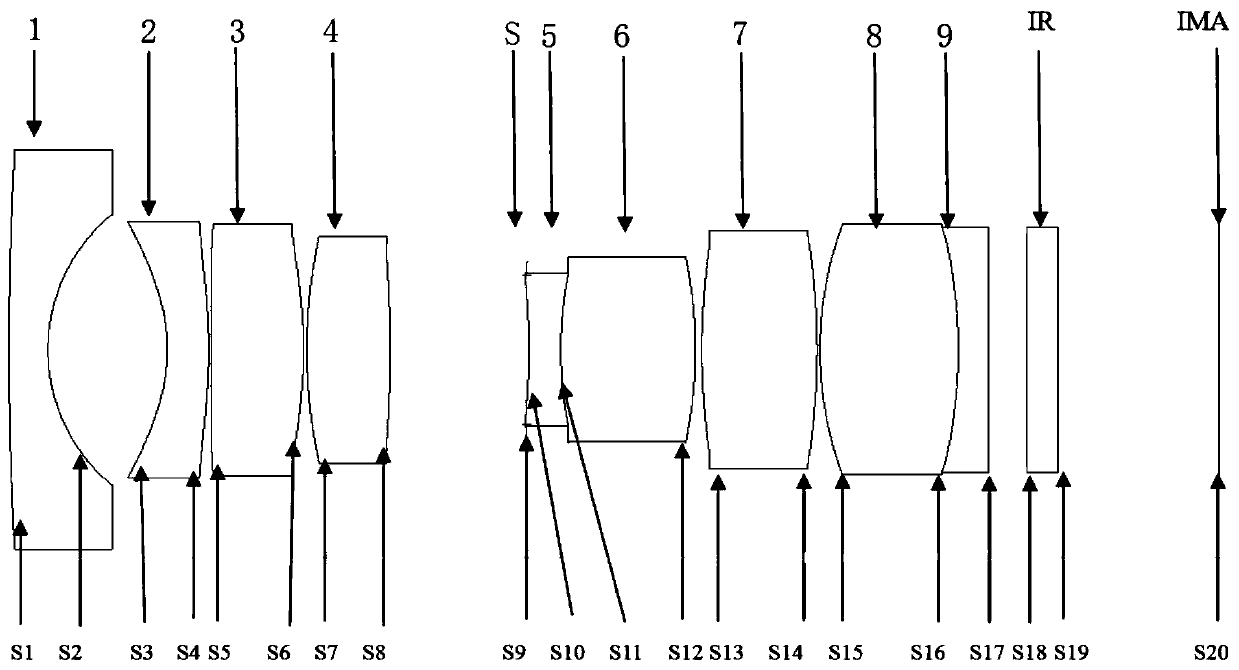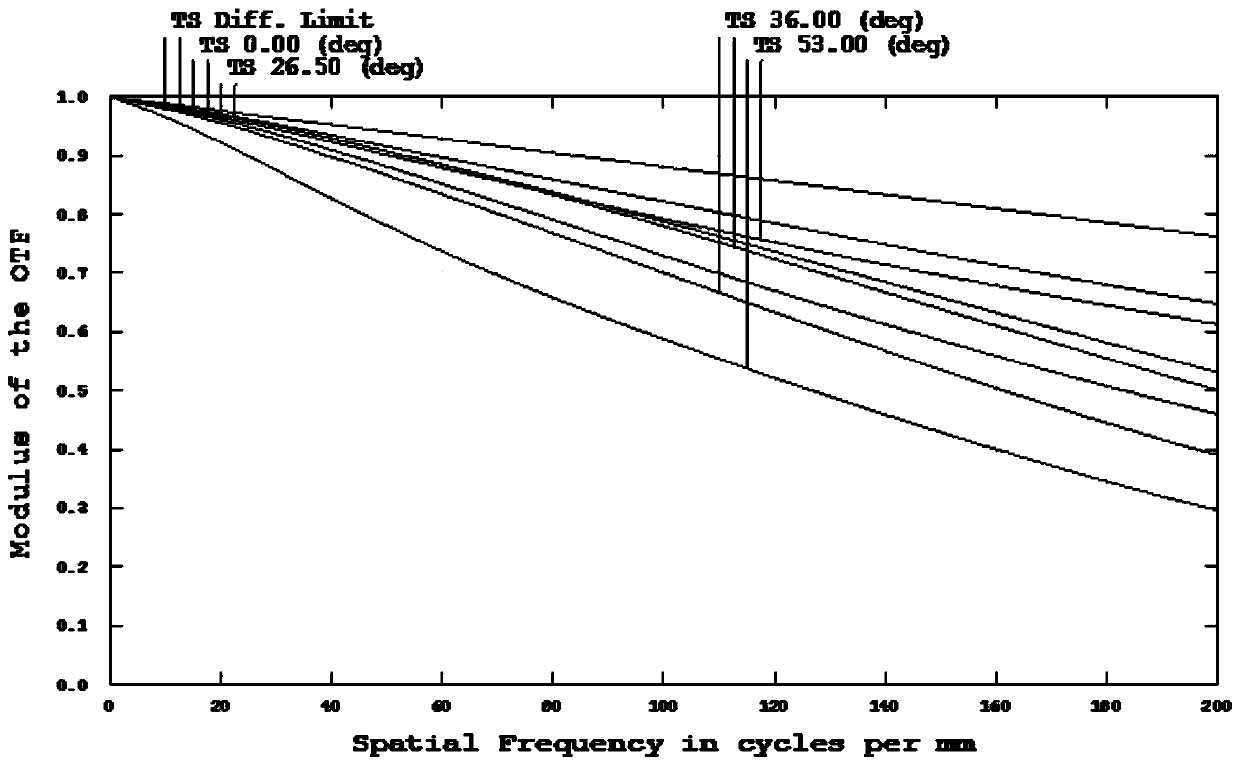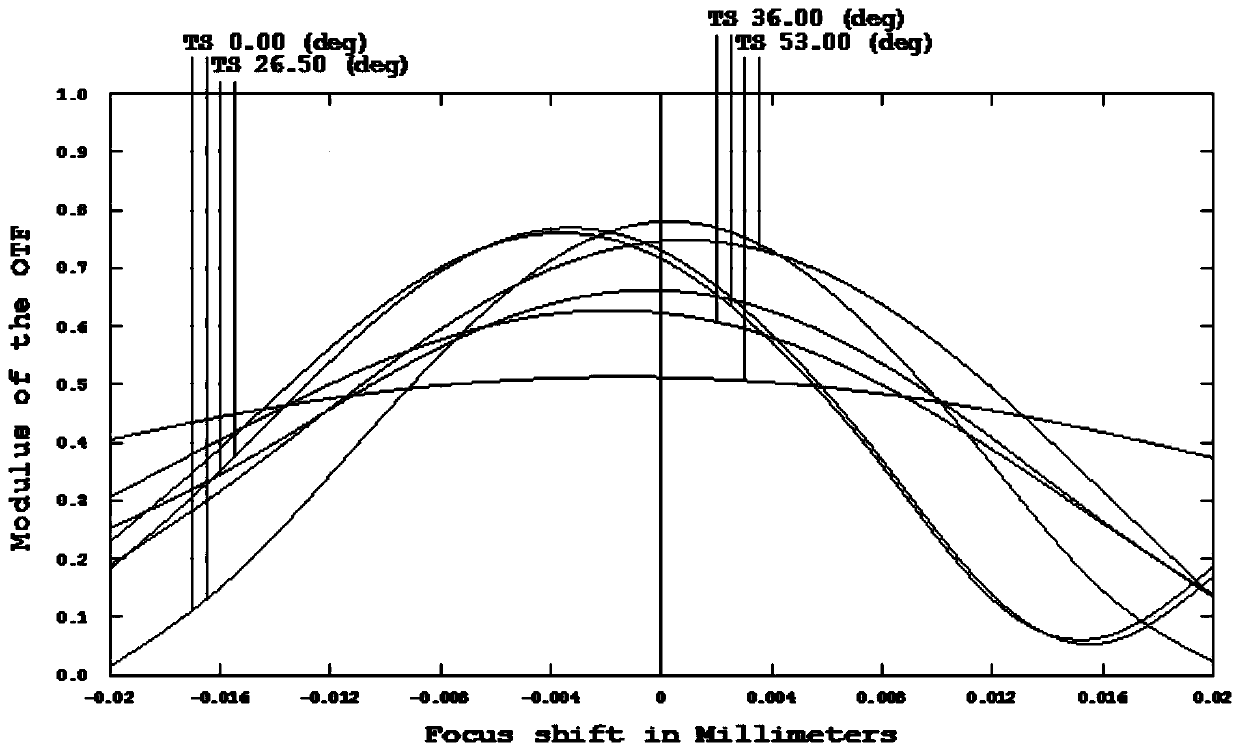Glass-plastic hybrid lens
A lens and plastic lens technology, applied in optics, instruments, optical components, etc., can solve the problems of left volume, high cost, few high-quality lenses with super large aperture, etc., and achieve weight reduction and small field curvature and astigmatism, good resolution effect
- Summary
- Abstract
- Description
- Claims
- Application Information
AI Technical Summary
Problems solved by technology
Method used
Image
Examples
Embodiment approach 1
[0078] based on figure 1 The shown lens configuration is used to illustrate this embodiment.
[0079] The parameters of the camera lens in Embodiment 1 are as follows:
[0080] FNO=2.0; TTL / BFL=5.21; h / f=0.848; FOV=106°.
[0081] The following table 2 lists the relevant parameters of each lens of the present embodiment, including the refractive index of surface type, radius of curvature, thickness, material, Abbe number and conic coefficient:
[0082]
[0083] Table 2
[0084] In this embodiment, the aspherical data are shown in Table 3 below:
[0085]
[0086] table 3
[0087] Figure 2 to Figure 5 Respectively schematically represent the MTF diagram of the glass-plastic hybrid lens of this embodiment under normal temperature 20°C and visible light; the Through Focus MTF diagram of 125 lp / mm under normal temperature 20°C under visible light; and the low temperature -40°C under visible light 125 lp / mm The Through Focus MTF diagram of 125lp / mm under visible light at...
Embodiment approach 2
[0091] Image 6 It schematically shows the structural diagram of the glass-plastic hybrid lens according to the second embodiment of the present invention. The description according to this embodiment is as follows:
[0092] The parameters of the camera lens in the second embodiment are as follows:
[0093] FNO=1.0; TTL / BFL=4.85; h / f=0.606; FOV=80°.
[0094] The following table 4 lists the relevant parameters of each lens of the present embodiment, including the refractive index of surface type, radius of curvature, thickness, material, Abbe number and conic coefficient:
[0095]
[0096]
[0097] Table 4
[0098] In this embodiment, the aspherical data are shown in Table 5 below:
[0099]
[0100] table 5
[0101] Figure 7 to Figure 10 Respectively schematically represent the MTF diagram of the glass-plastic hybrid lens of this embodiment under normal temperature 20°C and visible light; the Through Focus MTF diagram of 125 lp / mm under normal temperature 20°C und...
Embodiment approach 3
[0105] Figure 11 It schematically shows the structural diagram of the glass-plastic hybrid lens according to the third embodiment of the present invention. The description according to this embodiment is as follows:
[0106] The parameters of the camera lens in the third embodiment are as follows:
[0107] FNO=1.0; TTL / BFL=5.1; h / f=0.803; FOV=106°.
[0108] The following table 6 lists the relevant parameters of each lens of this embodiment, including the refractive index of surface type, curvature radius, thickness, material, Abbe number and conic coefficient:
[0109]
[0110] Table 6
[0111] In this embodiment, the aspherical data are shown in Table 7 below:
[0112]
[0113] Table 7
[0114] Figure 12 to Figure 15 Respectively schematically represent the MTF diagram of the glass-plastic hybrid lens of this embodiment under normal temperature 20°C and visible light; the Through Focus MTF diagram of 125 lp / mm under normal temperature 20°C under visible light; a...
PUM
| Property | Measurement | Unit |
|---|---|---|
| Defocus amount | aaaaa | aaaaa |
| Abbe number | aaaaa | aaaaa |
Abstract
Description
Claims
Application Information
 Login to View More
Login to View More - R&D
- Intellectual Property
- Life Sciences
- Materials
- Tech Scout
- Unparalleled Data Quality
- Higher Quality Content
- 60% Fewer Hallucinations
Browse by: Latest US Patents, China's latest patents, Technical Efficacy Thesaurus, Application Domain, Technology Topic, Popular Technical Reports.
© 2025 PatSnap. All rights reserved.Legal|Privacy policy|Modern Slavery Act Transparency Statement|Sitemap|About US| Contact US: help@patsnap.com



